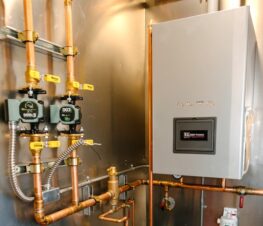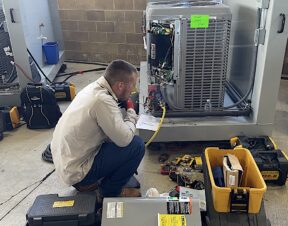 Dain Hansen is vice president of Government Relations, The IAPMO Group. He lends his frequent perspective of Capitol Hill, and the plumbing industry.
Dain Hansen is vice president of Government Relations, The IAPMO Group. He lends his frequent perspective of Capitol Hill, and the plumbing industry.
Here is an edited version of his update November 18, 2016
Administration Update
US Government Seeks Input on Global Water Strategy. On October 28, Ambassador and Special Representative for Environment and Water Resources Jennifer Haverkamp and USAID Senior Deputy Assistant Administrator Charles North hosted a listening session at the U.S. Department of State to solicit public views on how the U.S. could work to increase access to safe drinking water and sanitation, improve water resources management, and promote cooperation on shared waters, as public perspectives into the development of a U.S. Global Water Strategy (GWS). The GWS is required by the Senator Paul Simon Water for the World Act of 2014 and is due to Congress by October 1, 2017. Participants at the session included representatives from industry, academia, the philanthropic community, professional associations, and other U.S. agencies involved in water policy. The government is also seeking written comments. The submission deadline is Saturday, November 12, 2016.
With Time Running Short, EPA Aims to Finish Climate and Lead and Copper Rules. The Obama administration aims to cement its greenhouse gas regulations in the time remaining, but some of the largest greenhouse gas decisions will slide to President-elect Donald Trump, according to the updated federal regulatory agenda. The EPA plans to complete a rule for approving states’ plans to implement the Clean Power Plan, which sets carbon dioxide limits on power plants—a rule Trump has pledged to pullback. Now outstanding decisions on the future of some of the Obama EPA’s signature climate rules will be made by Trump appointees, including an ongoing review of the combined fuel economy and greenhouse gas emissions limits for passenger vehicles through 2025. The agency also is expected to propose in mid-2017 updates to its lead and copper rule setting technology-based standards to limit concentrations of the metals in drinking water. The final rule is due in early 2018, according to the agenda. During his campaign, President-elect Donald Trump called the Flint crisis a “horror show” that wouldn’t have happened on his watch. He has made infrastructure improvements a key priority.
Industry Update
New Study Documents Overwhelming Support of Home Fire Sprinklers by Consumers, Government Officials in Certain States. A new study by the Fire Protection Research Foundation highlights positive opinions of home fire sprinklers by homeowners and most government officials in U.S. states required to fire sprinkler new homes. Researchers surveyed stakeholders in California and Maryland, where fire sprinklers are required in all new homes. California’s statewide requirement went into effect in 2011 and, following a state building code update in 2015, fire sprinklers are now required in all of Maryland’s new homes. Key findings from the report include: the majority of homeowners surveyed had a positive view of sprinklers and would seek to include them in their next home and nearly 70 percent of homeowners noted that their fire sprinklers resulted in a reduction in their home insurance. Entities overseeing the states’ water resources noted that water quality was “not at all” an issue due to cross-contamination safeguards.
Australia Shows How Demand Management Can Work During Drought. The New York Times feature a story this week highlighting lessons learned from Australia’s “millennium drought.” Reducing water demand is often seen as a “soft” response to drought — less successful than big engineering projects. But Melbourne’s experience shows that helping residents (who use over 60 percent of the city’s water) and businesses to use less can be a “highly effective and relatively low cost” part of a city’s response. During the drought, domestic consumption dropped from 247 liters per person per day in 2000-1 to 147 liters in 2010-11 — enough to help save the city from running dry. Without water conservation, the reservoirs would have been empty by 2009, according to Melbourne Water.In comparison, households in Los Angeles use an average of 318 liters (84 gallons) per person per day.
Korea: A Model For Development Of Water And Sanitation Sector. A recent report from Korea provides new insight on how it was able to develop the water sector during the period 1960-2012. In 1962, only 18 percent of Koreans had piped water connection. The country had no managed sewers, not to mention wastewater collection and treatment facilities that appeared only in the mid-seventies. The Korean Journal of Parasitology (2006) reported that in 1971, due to poor water services and absence of handwashing practices, more than 84 percent of fecal samples contained helminth contamination, a parasitic worm whose eggs are infective and can cause severe morbidity, malnutrition, anemia and other immunological changes. However, Korea’s decision to integrate the water sector in the overal economic development of the country accompanied by continuous revisions to the legal and regulatory framework together with the provision of adequate financing were critical to turning things around.With international support including that from the World Bank, Korea galvanized its water sector by investing in water and wastewater infrastructure. The country also established municipal water and wastewater companies and trained engineers and specialists that continue running this vital sector.




Join the conversation: